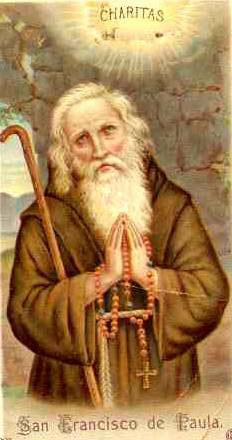We ask you, urgently: don't scroll past this
Dear readers, Catholic Online was de-platformed by Shopify for our pro-life beliefs. They shut down our Catholic Online, Catholic Online School, Prayer Candles, and Catholic Online Learning Resources essential faith tools serving over 1.4 million students and millions of families worldwide. Our founders, now in their 70's, just gave their entire life savings to protect this mission. But fewer than 2% of readers donate. If everyone gave just $5, the cost of a coffee, we could rebuild stronger and keep Catholic education free for all. Stand with us in faith. Thank you.Help Now >
Jean-Baptiste Biot
FREE Catholic Classes
A physicist and mathematician, born at Paris, France, 21 April, 1774; died. there, 3 February, 1862. He studied at first at the College of Louis-le-Grand; in 1793 he joined the artillery of the Army of the North, but soon left the service to enter the École Polytechnique. After going to Beauvais as a professor in the central school of that city, he returned to Paris, in 1800, to occupy, at the age of 26, the chair of mathematical physics in the Collège de France. He had the distinction of ultimately belonging to three of the classes of the Institute; in 1803 he was admitted to the Academy of Sciences; in 1841, to the Academy of Inscriptions and Belles-Lettres; and in 1856, to the French Academy. After beginning his career as a mathematician and astronomer, he was assigned to the section of geometry in the Academy of Sciences. Among the interesting incidents in his career may be cited his ascension in a balloon with Gay-Lussac in 1804. They rose to a height of 13,000 feet for the purpose of studying the magnetic, electrical, and chemical condition of the atmosphere at various elevations.
Biot was actively engaged in the various branches of the geodetic work involved in the famous measurement of the quadrant of a meridian, for the purpose of standardizing the length of the new unit, the meter. As a member of the Bureau of Longitudes he went, in 1806, with young Arago, to Formentera, in the Balearic Islands, to resume the measurement of a degree of the meridian, interrupted by the death of Mechian. In 1808 he determined, with Mathieu, the length of the seconds pendulum at Bordeaux and Dunkirk. In 1817 he went to Scotland and the Shetland Islands to verify the geodetic operations of the English under Colonel Mudge. In 1824 he returned to Italy, Sicily, and Spain, in order to correct some of the observations of the year 1808. He contributed more than 250 memoirs to various societies and periodicals. This enormous work covers the entire field of experimental and mathematical physics, as well as ancient and modern astronomy. He was the champion of the corpuscular theory of light which he extended to some most ingenious explanations of the very complex phenomena of polarization. Biot discovered the laws of rotary polarization by crystalline bodies and applied these laws to the analysis of saccharine solutions. His fame rests chiefly on his work in polarization and double refraction of light.
Regular habits of study and recreation kept him in good health and led to a ripe old age. His mental attitude may be indicated by his opposition to the open meetings of the Academy; he feared the influence of the vulgar public upon the scientific tone of the Institute. Since he was brought up in the turbulent times of the Revolution, it is not surprising to find him among the insurgents, in 1795, attempting to overthrow the Convention. Again, in 1804, he succeeded at first in prevailing on the Institute not to vote for Bonaparte's elevation to the throne. He protested against the introduction of purely political matters into the deliberations of a scientific body. His religious views became more pronounced towards the end of his life. He is said to have received the Sacrament of Confirmation at the hands of his own grandson.
The more elaborate works of Biot are: "Traité de géometrie analytique", 1802 (8th ed., 1834); "Traité de physique expérimentale et mathématique", 4 vols., 1816; "Précis de physique", 2 vols., 1817; "Traité d'astronomie physique", 6 vols. with atlas, 1850; "Mélanges scientifiques et littéraires", 3 vols., 1858. The last is a compilation of a great many of his critiques, biographies, and accounts of voyages.
Join the Movement
When you sign up below, you don't just join an email list - you're joining an entire movement for Free world class Catholic education.

-

- Stations of the Cross
- Easter / Lent
- 5 Lenten Prayers
- Ash Wednesday
- Living Lent
- 7 Morning Prayers
- Mysteries of the Rosary
- Litany of the Bl. Virgin Mary
- Popular Saints
- Popular Prayers
- Female Saints
- Saint Feast Days by Month
- Pray the Rosary
Pope Francis’ April Prayer Intention: Using Technology to Strengthen Human Connections
Finding Peace Through Prayer in a World of Worry
Trump Administration Withholds Federal Grants from Planned Parenthood Over DEI and Civil Rights Concerns
Daily Catholic
 Daily Readings for Wednesday, April 02, 2025
Daily Readings for Wednesday, April 02, 2025 St. Francis of Paola: Saint of the Day for Wednesday, April 02, 2025
St. Francis of Paola: Saint of the Day for Wednesday, April 02, 2025 Prayer for God's Help in Daily Actions: Prayer of the Day for Friday, March 14, 2025
Prayer for God's Help in Daily Actions: Prayer of the Day for Friday, March 14, 2025 Daily Readings for Tuesday, April 01, 2025
Daily Readings for Tuesday, April 01, 2025 St. Hugh of Grenoble: Saint of the Day for Tuesday, April 01, 2025
St. Hugh of Grenoble: Saint of the Day for Tuesday, April 01, 2025- To Perceive Animals as God's Gifts: Prayer of the Day for Thursday, March 13, 2025
![]()
Copyright 2025 Catholic Online. All materials contained on this site, whether written, audible or visual are the exclusive property of Catholic Online and are protected under U.S. and International copyright laws, © Copyright 2025 Catholic Online. Any unauthorized use, without prior written consent of Catholic Online is strictly forbidden and prohibited.
Catholic Online is a Project of Your Catholic Voice Foundation, a Not-for-Profit Corporation. Your Catholic Voice Foundation has been granted a recognition of tax exemption under Section 501(c)(3) of the Internal Revenue Code. Federal Tax Identification Number: 81-0596847. Your gift is tax-deductible as allowed by law.


 Daily Readings for Wednesday, April 02, 2025
Daily Readings for Wednesday, April 02, 2025 St. Francis of Paola: Saint of the Day for Wednesday, April 02, 2025
St. Francis of Paola: Saint of the Day for Wednesday, April 02, 2025 Prayer for God's Help in Daily Actions: Prayer of the Day for Friday, March 14, 2025
Prayer for God's Help in Daily Actions: Prayer of the Day for Friday, March 14, 2025 St. Hugh of Grenoble: Saint of the Day for Tuesday, April 01, 2025
St. Hugh of Grenoble: Saint of the Day for Tuesday, April 01, 2025

